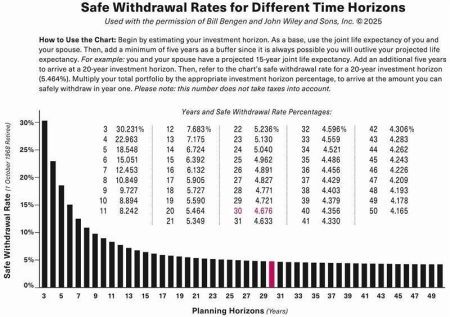If you’re approaching retirement or recently retired, you’ll want to make sure you have enough regular retirement income to enjoy your retirement but also make sure you won’t outlive your money. To do this, you’ll need to shift your mindset from saving for retirement to creating financial security in retirement.
Let’s look at four steps to help you build your retirement income portfolio.
Step 1: Create A Budget And Set Goals
You’ll need to know how much retirement income you need to live the life you want in retirement. To do this, you’ll need to develop a budget for your living expenses.
While you’re preparing your budget, you’ll want to consider how it will change when you retire. Some living expenses typically increase, such as premiums for Medicare and health insurance, and out-of-pocket medical expenses. But some expenses will likely decrease, such as those for commuting, work clothes, and child-rearing if you raised a family.
You’ll also want to identify your “must have” living expenses—those basic expenses that you need to survive. Examples of these include costs for housing, insurance, food, utilities, and property taxes. In addition, you should itemize your “nice to have” living expenses, such as the cost of travel, hobbies, and spoiling your grandkids.
You’ll also want to determine how much retirement income you’ll have coming in that’s guaranteed to be paid to you for the rest of your live, no matter how long you live, and won’t drop if the stock market crashes. Examples of this include pensions (if you have one), Social Security benefits, and income annuities. Your overall goal should be to have enough guaranteed income that you won’t panic when the stock market crashes and sell your stock investments at a low value. One possible goal is to guarantee you have enough to cover your must-have living expenses, or at least come close.
Once you’ve determined that you have enough guaranteed retirement income, you might feel comfortable generating most of your remaining retirement income with stock market investments that have the potential for growth to help counter inflation.
Step 2: Maximize Your Social Security Benefits
Social Security income is the best source of retirement income for most people, because it offers valuable features:
- It’s paid for the rest of your life.
- It won’t decrease if the stock market crashes.
- It’s adjusted for inflation every year.
- It has survivor benefits if you’re married.
- A portion of your benefits won’t be subject to income taxes.
As a result, it makes sense to get the most you can from this valuable benefit. Many people can accomplish this goal through a careful strategy of delaying the start of their benefits, even after they retire. There are a handful of online calculators that will help you determine the best way to get the most from Social Security; one of my favorites is Open Social Security, which is a free service.
If you find that the best Social Security strategy is to delay taking your benefits for a few years after you retire, you can try one of two strategies to bring in the money you need to cover your expenses. You can work part time—just enough to replace the Social Security income you’re delaying—or you can build a Social Security bridge with careful withdrawals from your savings.
Step 3: Build Enough Protected Income To Feel Safe
If your Social Security benefits don’t provide enough of the guaranteed income that you established in Step 1, you’ll need to deploy some of your savings to purchase an income annuity from an insurance company. You’ll want to purchase enough annuity income to reach your goal for guaranteed income, when combined with Social Security.
Annuities can be a complex financial instrument, so you’ll want to learn about the different types of annuities and how much they cost. You may want to work with a financial advisor to help you with this purchase as it can be a complicated decision. If you do work with an advisor, make sure they’ll agree to serve you as a fiduciary, have been trained on developing retirement income strategies, and are paid to have your best interests at heart.
Step 4: Develop Variable Retirement Paychecks For Growth Potential
Once you have enough guaranteed retirement income to feel that you can comfortably cover your basic living expenses, you can then develop variable retirement paychecks with the potential for growth. In this case, there are two important decisions you need to make:
- How to invest your savings, including how much to devote to stock investments. A good starting point is a low-cost target date fund that’s appropriate for retirees or a balanced fund that invests in a mix of stocks and bonds.
- How much to withdraw each year so that the odds are good you won’t exhaust your savings. A good starting point for the withdrawals is to employ the methodology used for the IRS required minimum distribution (RMD), which is simple to calculate. I conducted extensive research in the past few years, which projected that these withdrawal amounts have a very good chance of helping your savings last the rest of your life.
Making these two decisions is another complex task that’s often beyond many people’s expertise and experience. Don’t feel reluctant to ask for help—it’s OK to admit you might need help from a qualified professional.
The steps described here may take some time to put in place, but it’s well worth the effort. By spending the time it takes to build a portfolio of reliable, lifetime retirement income, you’ll feel more confident about simply enjoying your retirement.
Read the full article here









